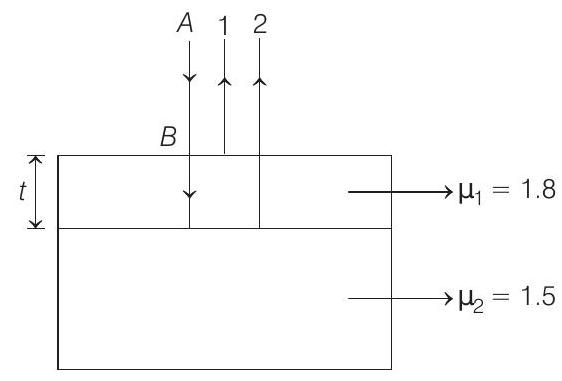Optics 6 Question 48
50. A glass plate of refractive index 1.5 is coated with a thin layer of thickness
Show Answer
Answer:
Correct Answer: 50.
Solution:
- Incident ray

Ray 1 is reflected from a denser medium, therefore, it undergoes a phase change of
Hence, phase difference between rays 1 and 2 would be
Least value of
NOTE
- For a wave (whether it is sound or electromagnetic), a medium is denser or rarer is decided from the speed of wave in that medium. In denser medium speed of wave is less. For example, water is rarer for sound, while denser for light compared to air because speed of sound in water is more than in air, while speed of light is less.
- In transmission/refraction, no phase change takes place. In reflection, there is a change of phase of
- If two waves in phase interfere having a path difference of
- But if two waves, which are already out of phase (a phase difference of






